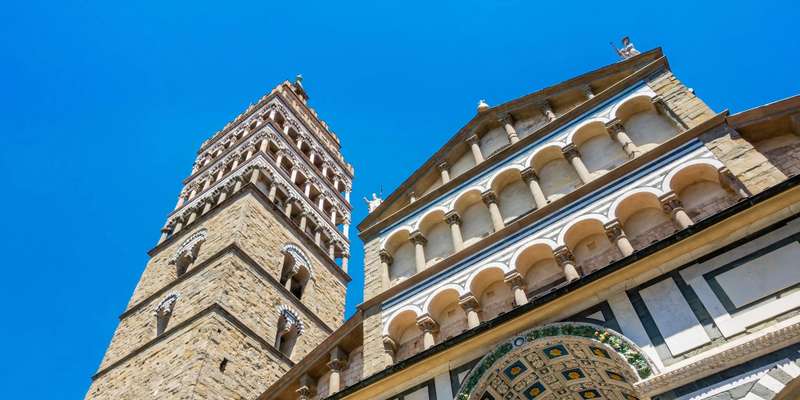- Home
- Useful Tips
- Where to find Pistoia's...
Finding authentic artisan paper products in Pistoia can feel like searching for hidden treasure. Many visitors leave with mass-produced souvenirs, unaware they've missed the centuries-old papermaking traditions unique to this Tuscan city. Over 60% of travelers report dissatisfaction with generic tourist souvenirs, craving meaningful mementos that reflect local culture. The challenge lies in locating the skilled artisans keeping these traditions alive, often tucked away in unassuming workshops. Pistoia's paper heritage dates back to medieval times, when monasteries perfected techniques still used today. Without local knowledge, you might walk right past these cultural gems, settling for inferior imitations instead of heirloom-quality pieces. The frustration of returning home with items lacking authentic connection is all too common among well-intentioned travelers.


Why Pistoia's paper artisans are worth seeking out
Pistoia's papermaking tradition represents a living link to Renaissance craftsmanship, with techniques passed down through generations. Unlike factory-produced stationery, these artisans use cotton and linen fibers, hand-pressing each sheet for distinctive texture. The city's unique microclimate contributes to the paper's quality, with natural humidity preventing brittleness. Local workshops still employ watermark methods developed in the 13th century, creating pieces that art historians and collectors prize. Many visitors don't realize these artisans often supply high-end Florentine boutiques at triple the price. The paper's durability comes from traditional sizing with gelatin, allowing it to withstand centuries - a fact demonstrated by preserved documents in Pistoia's archives. These characteristics make authentic purchases not just souvenirs, but future heirlooms with tangible connections to Tuscan history.
Navigating Pistoia's historic center for hidden paper workshops
The maze of medieval streets around Piazza del Duomo holds most artisan studios, though their discreet signage requires keen observation. Start near the 12th-century Baptistery, where Via degli Orafi conceals two family-run cartiere (paper mills) behind weathered wooden doors. Mid-morning visits increase chances of seeing artisans at work, as many close for riposo after lunch. Look for subtle clues like stacks of drying paper in courtyard windows or the distinct scent of sizing solutions. Don't hesitate to peek into unmarked ateliers - most craftspeople welcome respectful observers and often explain their process. The area between Via Abbi Pazienza and Corso Silvano Fedi contains three generations-old workshops specializing in marbled papers, their entrances marked only by small brass plaques. These locations maintain irregular hours, so planning flexible time in this quarter proves essential for successful discoveries.
Identifying authentic handmade paper versus tourist replicas
Genuine Pistoia paper reveals itself through subtle details often missed by untrained eyes. Authentic sheets will show slight irregularities in deckle edges, evidence of the handmade mold process. Hold sheets to light to spot true watermarks - blurred imitations indicate machine production. Traditional colors come from natural pigments like walnut husks or saffron, yielding soft hues rather than garish tourist tones. Price proves another indicator: legitimate artisan papers cost €15-€40 per sheet, while counterfeits cluster under €10. Feel for cotton fiber's velvety texture, distinctly different from wood pulp's smoothness. Reputable artisans always include their studio's stamp and production date, often with a handwritten note about materials used. For bound items, examine stitching - traditional long-stitch bindings use linen thread with visible wax coating. These markers help distinguish true craftsmanship from the flood of imports overwhelming some souvenir shops.
Preserving your artisan paper purchases for the journey home
Proper handling ensures these delicate treasures survive transit intact. Artisans typically wrap sheets in acid-free tissue before placing them in rigid portfolios - never accept pieces in flimsy plastic bags. For larger purchases, request a mailing tube lined with archival paper, preferable to folding any items. Climate-controlled luggage compartments prevent humidity damage during flights, making carry-ons ideal for paper transport. If purchasing marbled papers, keep them separated with glassine sheets to prevent pigment transfer. Many workshops provide certificates of authenticity that simplify customs declarations for valuable pieces. Consider scheduling your paper shopping late in your stay to minimize handling, or inquire about direct shipping services some artisans arrange through local partners. For particularly fragile items like handmade books, specialized luggage inserts available at Pistoia's better stationers provide added protection during your travels home.
